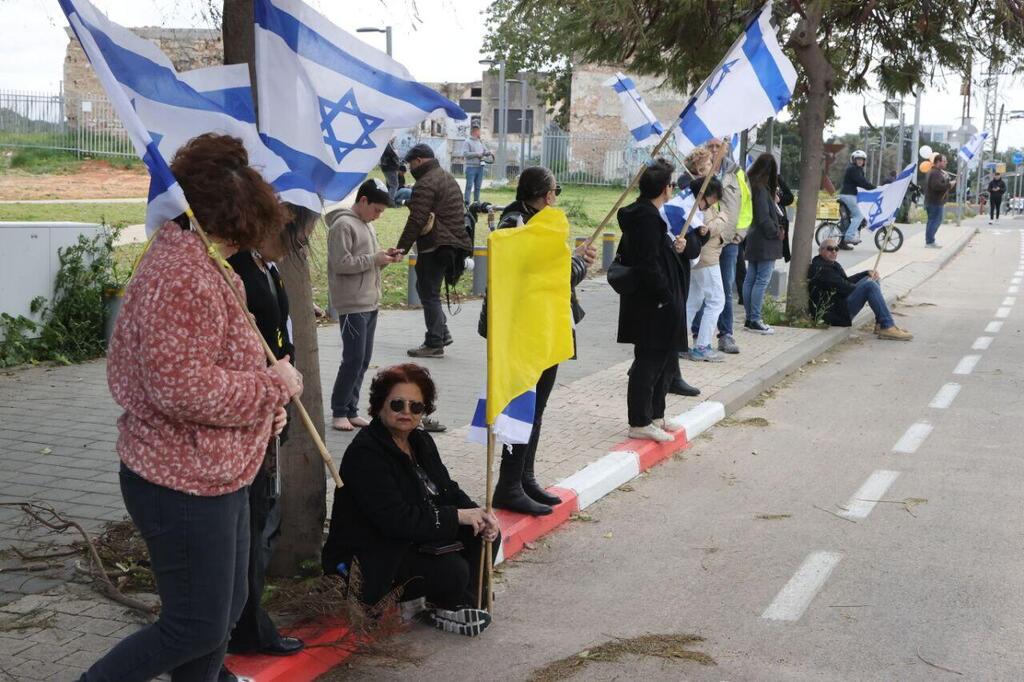Getting your Trinity Audio player ready...
The National Center for Forensic Medicine officially confirmed Thursday evening that it has identified the body of former hostage Oded Lifshitz, 85, who was murdered in captivity more than a year ago.
His family and the Prime Minister’s Office had announced the development earlier in the day, with officials saying that he was killed by Palestinian Islamic Jihad.
Remains of slain hostages repatriated from Gaza
(Video: Herzl Yosef, Israel Police, Or Hadar)
Dr. Chen Kugel, head of the forensic institute, said that forensic teams were working to provide definitive identification of the three other bodies transferred from Hamas custody, which the terrorist group has claimed to be those of Shiri Bibas and her two young sons, Ariel and Kfir.
Hundreds of Israelis gathered along the roads without any formal call to do so, lining the route taken by the convoy carrying the hostages' remains from Gaza to the forensic center in Tel Aviv. Silent and solemn, they held Israeli flags, orange balloons symbolizing the red-haired Bibas children, and signs reading "Forgive us." Elderly women recited Psalms, teenagers stood with tear-streaked faces and a man clutching a balloon watched in silence.
Political debates and media controversies surrounding the hostage deal were absent in the quiet crowd. As the procession passed, a man shouted, “Wherever the convoy goes, the rain starts. The heavens are crying, believe me, the heavens are crying.” Dark clouds rolled in, muting the colors of the balloons and ribbons tied to trees in a symbolic moment.
5 View gallery


Elderly women recite Psalms outside the National Center for Forensic Medicine
(Photo: Moti Kimchi)
5 View gallery


Civilians gather near the National Center for Forensic Medicine to show support as hostage bodies are received
(Photo: Moti Kimchi)
"We came to pay our final respects to the babies murdered by these monsters. We couldn’t stay home," said Uri, one of the mourners. Another attendee, Nava, expressed her anguish: "I came to ask for forgiveness. This is the least we can do. My family lives in Nahal Oz; by chance, they survived. I feel terrible."
Get the Ynetnews app on your smartphone: Google Play: https://bit.ly/4eJ37pE | Apple App Store: https://bit.ly/3ZL7iNv
Many spoke of an overwhelming sense of duty, explaining that they could not go about their daily routines on such a day. "A colleague called me from work, and I couldn't understand how he could even sit at his computer," said Nirit from Tel Aviv. Eli and Anat from Rishon Lezion added, "The entire country should be here today. This is a national day of mourning. Everything should have been shut down."
5 View gallery


Civilians show support at Ashkelon Junction during the transfer of fallen hostages to the National Center for Forensic Medicine
(Photo: Ashkelon Municipality)
5 View gallery


The National Center for Forensic Medicine during the reception of hostage bodies
(Photo: Moti Kimchi)
As the convoy reached its destination, a heavy silence filled the air. "We abandoned those babies. It’s unbearable. We left them for over 500 days," said Osnat, struggling to hold back tears. Others recounted how they had been watching the news at home but felt compelled to come in person. "We couldn’t just sit there anymore," said Eli. "We had to be part of this moment."
Then, as the vehicles carrying the hostages' remains approached, the mourners broke into an impromptu rendition of Israel’s national anthem, Hatikvah. "The hope of two thousand years," they sang, their voices raw with emotion, their eyes red with grief.
First published: 19:16, 02.20.25





